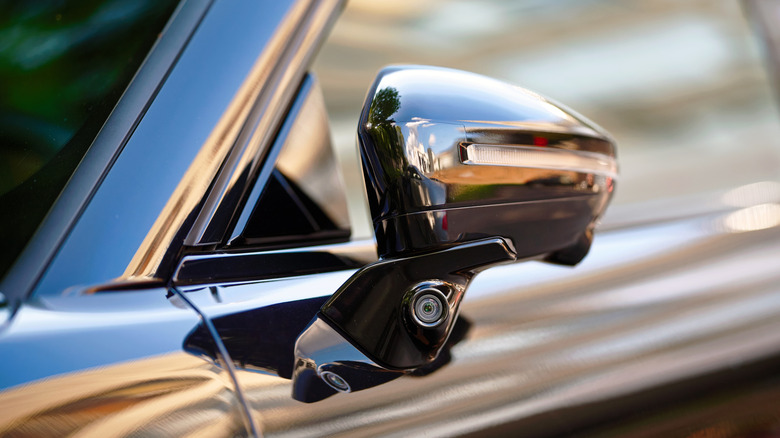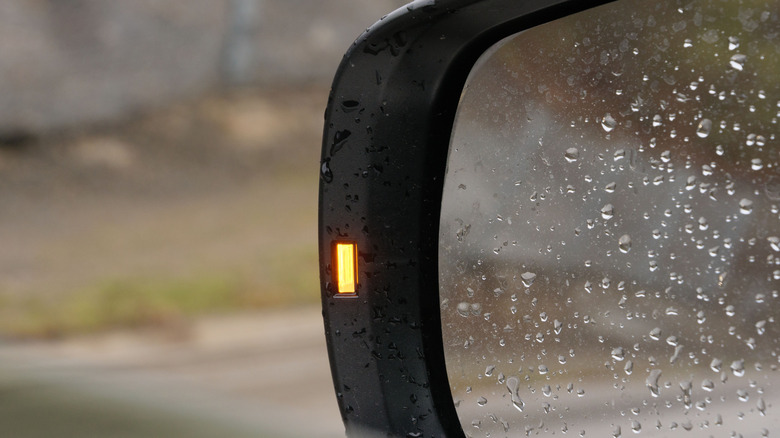What Does BSD Stand For, And How Does The Car Tech Work?
Modern cars feature a range of advanced driver assistance systems (ADAS) designed to mitigate road accidents and improve driving safety. One of these is BSD, or blind-spot detection. This technology scans adjacent lanes for approaching vehicles and alerts the driver, virtually eliminating blind spots around the car while driving. Also known as blind-spot warning (BSW), blind-spot information system (BLIS), blind-spot monitoring, or blind-spot assist depending on the car model, this safety feature monitors approaching vehicles or objects on the left and right sides of the car, effectively widening the driver's field of vision especially when changing lanes, merging on the interstate, or parking.
Not all cars are the same, and some have the worst blind spots, making them challenging to drive. Vehicles such as the Chevy Camaro are affectionately referred to by their owners as "Panzer tanks" due to their poor all-around visibility. Thankfully, many modern cars have BSD available to help address visibility issues.
A 2018 IIHS report indicated that cars with blind-spot detection were involved in 14% fewer lane-changing accidents in general, and 23% fewer lane-changing crashes with injuries. Volvo was the first automaker to offer a blind-spot information system on a commercially available vehicle in 2005. The distinction belongs to the S80 sport-luxury midsize sedan, a car heralded as one of the safest and most reliable from the Swedish automaker.
How does BSD work?
Depending on the make and model of the vehicle, BSD systems typically utilize an array of radar sensors and cameras to track approaching cars from the adjacent lanes. You can find the cameras and sensors in the front or rear bumpers, with some embedded in the side mirrors. Radar sensors emit radio waves that bounce off objects and can determine the speed and distance of those approaching objects based on how long it takes the radio waves to return to the sensor. The advantages of radar sensors include all-weather detection capabilities, more accurate measurements, and the ability to track fast-moving objects, such as cars.
Blind-spot detection systems can also utilize cameras that capture real-time footage of the vehicle's surroundings and use sensors to identify vehicles in a car's blind spots. Meanwhile, other systems rely on ultrasonic sensors that emit high-frequency sound waves, which work excellently in low-speed driving or when parking. When the system collectively detects a vehicle approaching in a blind spot, the system will alert the driver. These can take the shape of beeping noises, a blinking light on the inner rim of the wing mirrors, a warning light on the A-pillars, or via notifications on the instrument panel and heads-up display.
The audible and visual alerts will serve to caution the driver when merging or changing lanes. In some cases, BSD works together with other ADAS features, such as rear cross-traffic alert. If the beeping noises and visual alerts are too much, the driver can disengage or turn off blind-spot detection by pressing a toggle button.

